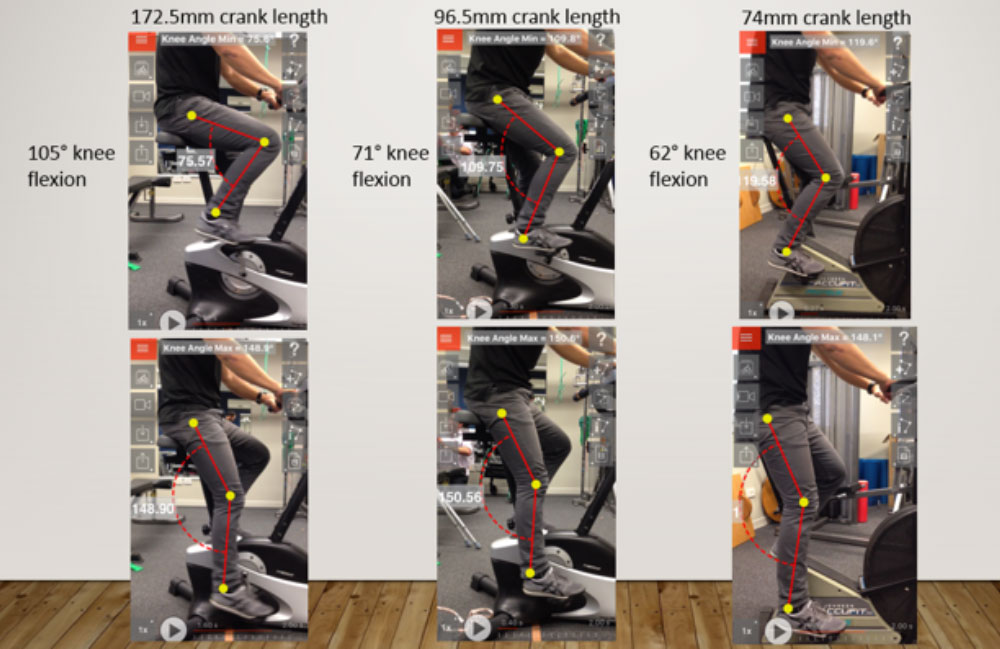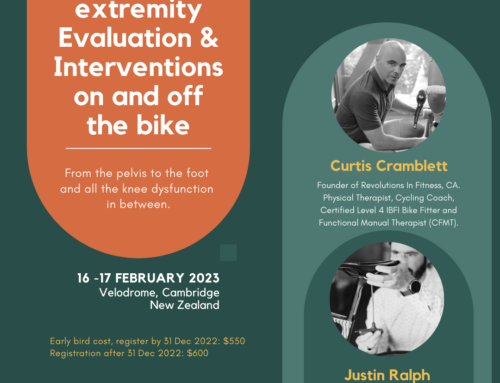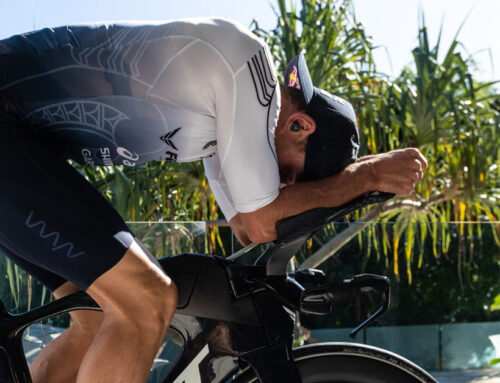We have heard a lot over the past two decades regarding crank length with some great research that there are no negatives to reducing crank length (within reason) and in fact there are positive performance gains with shorter cranks for some athletes. From my perspective as a bike fitter with a physiotherapy background working with athletes to mitigate injury risk and enhance performance, I have been a big advocate for using shorter cranks. To date the biggest restriction is often what is available and affordable as it would seem some manufacturers have been slow to keep up with the growing demand for shorter cranks. Even to get shorter cranks for my children’s bikes was a challenge; at 6 years old a 152mm crank that came on the bike seemed long given his relative height and leg length and although at this young age he is very flexible and hip range of motion is not an issue for him, he is still much more comfortable and efficient on a shorter crank length.
The focus of this section however relates more to the benefits of shorter crank lengths so cycling can be used in early stages of rehabilitation and for those individuals who have significant joint range of mobility limitations in the lower limbs (hip / knee / ankle). It is common practice for cycling to be suggested and prescribed by doctors and physio’s post operation for individuals, however in some cases they don’t have enough mobility to achieve this and then cycling is put off for weeks or months until the mobility can be achieved. Cycling is commonly used given it is low impact and an effective modality to help gain mobility, strength, fitness and general health and wellbeing. Given all those potential positive benefits it would seem imperative to get individuals on the bike as soon as possible.
Crank adaptors make this possible, whether as a short- or long-term option they allow an individual to ride with as little as 60 degrees of knee flexion (bend) compared to the usual 105 degrees (Picture 1) and this is achieved without compromising the overall position.

Picture 1: Crank length and knee flexion
Another common option to reduce knee flexion could be to lift the saddle, however then the individual requires greater leg extension at the bottom of the pedal stroke putting them at risk of injury. As with all shorter crank options the crank adaptor allows you to find the optimal leg extension position and then adjust the crank length to ensure the full pedal stroke is optimal. Often following a knee joint replacement 90-100 degrees of knee flexion is required to start cycling (and that’s with a high saddle) and often that’s not possible until a few weeks post-surgery, so to be able to get cycling much earlier has benefits of improving joint range of motion and strength sooner.
Common surgical procedures of the hip, knee, or ankle joint could result in a short- or long-term limitation of mobility at one or more joints. For example, an individual with limited ankle dorsiflexion due to an old ankle injury will require a greater amount of hip flexion compared to their non-injury side to get through the top of the pedal stroke. This could be coupled with limited hip flexion due to a hip pathology (pain/injury). For this individual the compensation then occurs at the pelvis, and we see a ‘hitch’ through the top of the pedal stroke to keep cycling. In some cases, the individual may be able to carry on, however will be at risk of further injury to the noted joints as well as the lower back which is commonly reported in literature as the leading cause of pain and injury related to cycling and in this case would be the area compensating and being ‘overloaded’ due to the hip and ankle dysfunction. This situation can cause the individual significant pain and they may not be able to ride through the pain, or it’s just not enjoyable anymore. Being able to significantly reduce the crank length with a crank adaptor can make a significant difference to an individual giving them the option to pedal the bike again, whether its short term as they recover to regain strength and function quicker than they would otherwise be able to do, or whether it’s a long-term change that will improve their health and wellbeing.
I think this really highlights another significant benefit to having shorter crank options.


